You know when you’ve found a handful of recipes that you love; the ones you go back to again and again? Those recipes that you want to share with others, but that can mean adapting the ingredient quantities, which means MATHS. If you’re like me, maths equals tears. So, I’m sharing an easy method I use to both increase and decrease quantities in a recipe, otherwise known as scaling recipes!
Contents
- What does scaling recipes mean?
- Why scaling recipes accurately is important
- Imperial or metric?
- What kinds of recipes can I scale?
- Can’t I just double it?
- Extra consideration when doubling or halving recipes
- Easy conversion
- How to scale a recipe to increase the yield
- How to scale a recipe to decrease the yield
- What to do if your results are odd numbers and decimals when scaling down
- What if I need to be super specific?
- Oven temperature and baking times
- Adapting your equipment when scaling recipes
- Scaling recipes the easy way
What does scaling recipes mean?
Scaling a recipe simply means adjusting the amount of ingredients you use to either increase or decrease the yield of your recipe.
For example, adapting a recipe to make less cookies or more cookies, depending on what you’re looking to do.
To scale a recipe, some maths is involved to make sure that you achieve the best end result with your recipe. It’s so simple, though! I’ve always found maths to be my weakest point, so when my brother said he’d had a dream about this method of scaling recipes, I was all ears.
Yes, my brother actually had a dream about how to increase and decrease the quantities of ingredients in a recipe. Does he bake? No. But, if you’ve read my Dune landscape cake recipe post, you’ll know how seriously I take dreams. We tried and tested this method to be sure and it’s spot on!

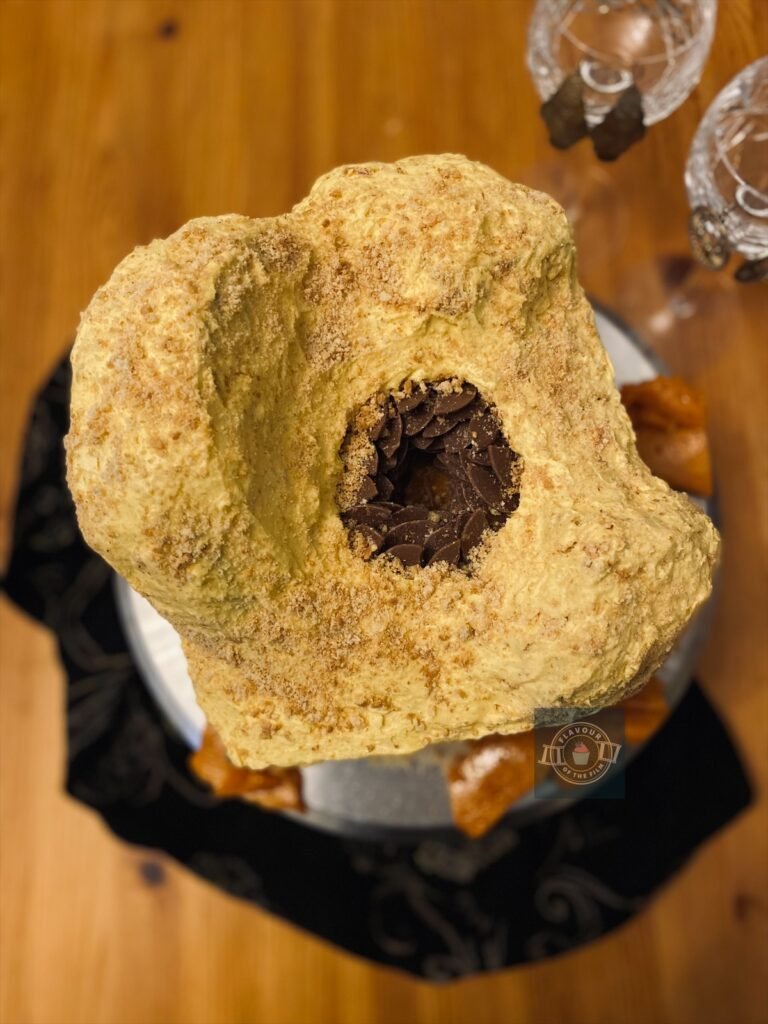
Why scaling recipes accurately is important
As baking is a science, you can’t just wing it and expect great results. It’s a lesson most of us will learn at some stage when we first start getting into baking!
Unlike with cooking, baking requires an exact measurement of each ingredient. That exact amount needs to be in balance and working in harmony with the rest of the ingredients required for the bake.
If you try to bake something by eye or to taste, you are more than likely going to end up with something far from what you originally planned.
As you need your ingredients to be measured precisely and working in harmony together, you need to be able to increase or decrease each ingredient using the same formula to achieve the same time of great end result that you would expect had you just followed the recipe as written.

Imperial or metric?
I want to state here and now that scaling recipes is much easier when dealing with the metric system rather than the imperial.
As the metric system requires a smaller measurement categorisation, it’s easier to be more accurate when scaling recipes up or down.
For my American friends, I encourage you to adopt the metric system when baking purely because it often means more accurate ingredient quantities. Being able to weigh out your ingredients allows for a more precise quantity.
Measuring ingredients using the imperial system is absolutely fine. But, when you’re wanting to adjust your recipe quantities, it really is a lot simpler to do when your ingredients are as accurately noted as possible.
My favourite conversion calculator that I use for all of my own recipes is this one on Charlotte’s Lively Kitchen. It makes my recipes more accessible and also means that you can adjust recipes only provided using the imperial system more easily in order to scale them. Plus, you can convert based on types of ingredients which is really handy!


What kinds of recipes can I scale?
Most recipes for baked goods can be scaled up or down. There are certain types, however, that require more diligence than others.
Smaller treats like cookies and cupcakes are a lot easier to adapt because you can easily scale them up or down. Plus, they can be quite forgiving which means you can scale them at a higher rate, both increasing or decreasing.
Standard cakes that require the ingredients to be measured out in equal parts can be easily scaled up or down as they usually only require you to apply this method to one ingredient. Whatever the weight of that one ingredient is will be the same for the rest.

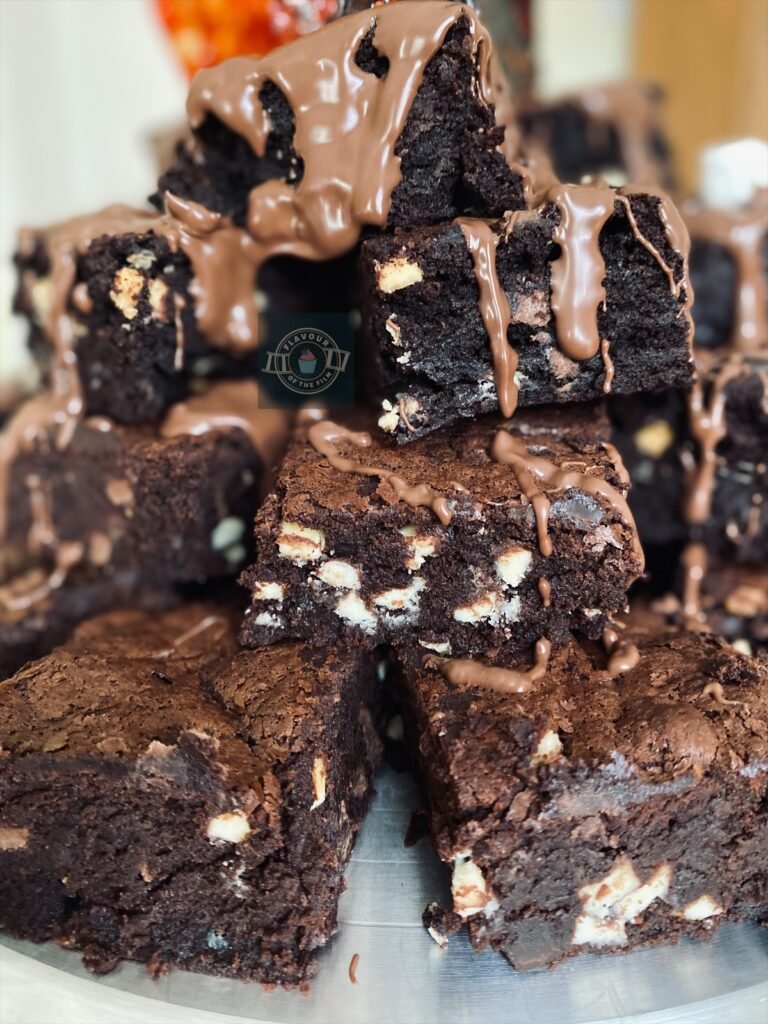
For example, a simple plain vanilla sponge cake could require:
- 200g self-raising flour
- 200g unsalted butter
- 200g caster sugar
- 200g eggs
- 1 tsp vanilla extract
If you were to increase the recipe by half, you would halve one of the ingredients and then add that half on to the original amount. Repeat with all of the ingredients and everything would weigh 300g each. Then, increasing the extract would just mean halving the tsp and adding the half on to make 1½ tsp.
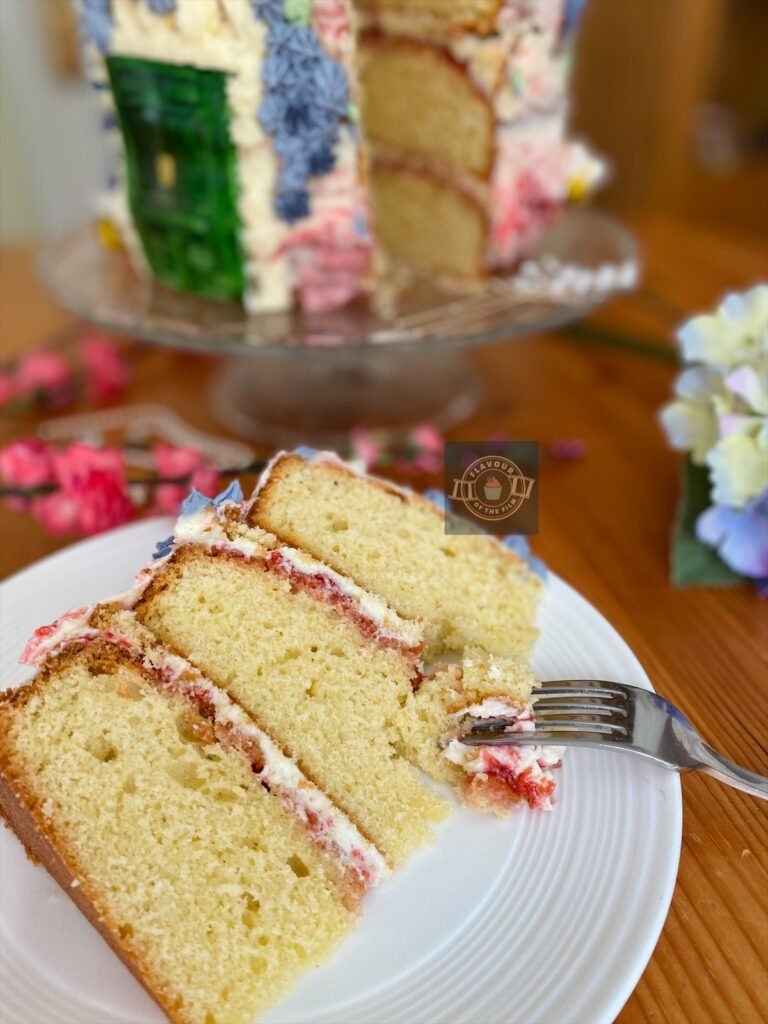
However, some baked goods like specific cakes and breads are not as easy to scale as this.
Something like a red velvet cake or chocolate fudge cake, which requires more ingredients and varying ratios in comparison to the aforementioned plain vanilla sponge cake, would need a little more working out.
It’s still entirely possible to do using the method below, it just means being more aware of specific ingredients and what they are designed to do. More on this next!
Can’t I just double it?
Whether or not you can just double or halve a recipe completely depends on the type of bake you’re making. Doubling or halving a recipe is usually the easiest way to adjust the yield, but you can’t always double or halve every ingredient straight out the gate.
For example, when you are looking to make a four layer cake using a two layer recipe (same size cake layers), you can usually double the entire ingredients list for it to work. Depending on the flour and raising agents used, of course.
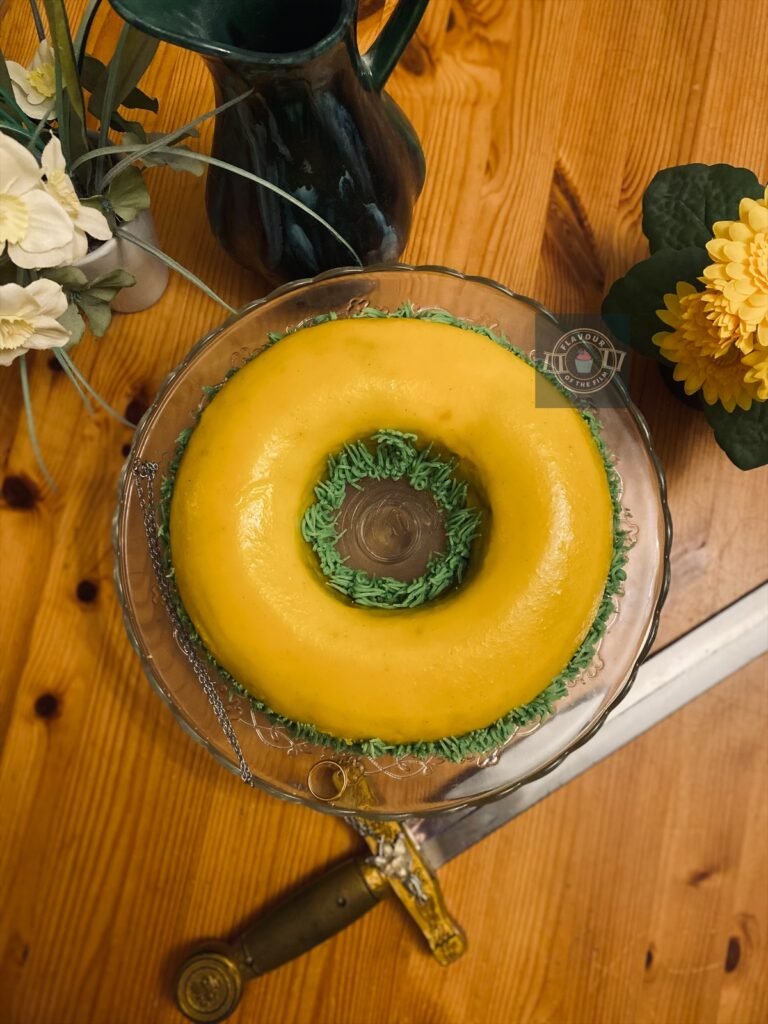

Extra consideration when doubling or halving recipes
If you’re using a plain flour and baking powder combo, you need to make sure that the amount of baking powder you are using stays in line with the guidance noted on the tub of your baking powder. General advice is usually 2 tsp baking powder per 200g plain flour. This can differ depending on the brand of baking powder you use, so be sure to check the instructions on the tub!
If your original recipe is already calling for 200g plain flour, you can simply double the rest of the ingredients and not have to think about whether or not the baking powder is too little or too much. It stays in an equal ratio with the flour whether you double or even quadruple it.
If your original recipe is 150g plain flour, you have to consider how much baking powder you need instead of just doubling the original amount. It could affect the entire structure of your cake sponges otherwise. This is where ½ tsp and the like come into play.
The same applies for when you are halving a recipe. You can’t just half a recipe that calls for a more specific amount of plain flour and not consider how much baking powder you would need.
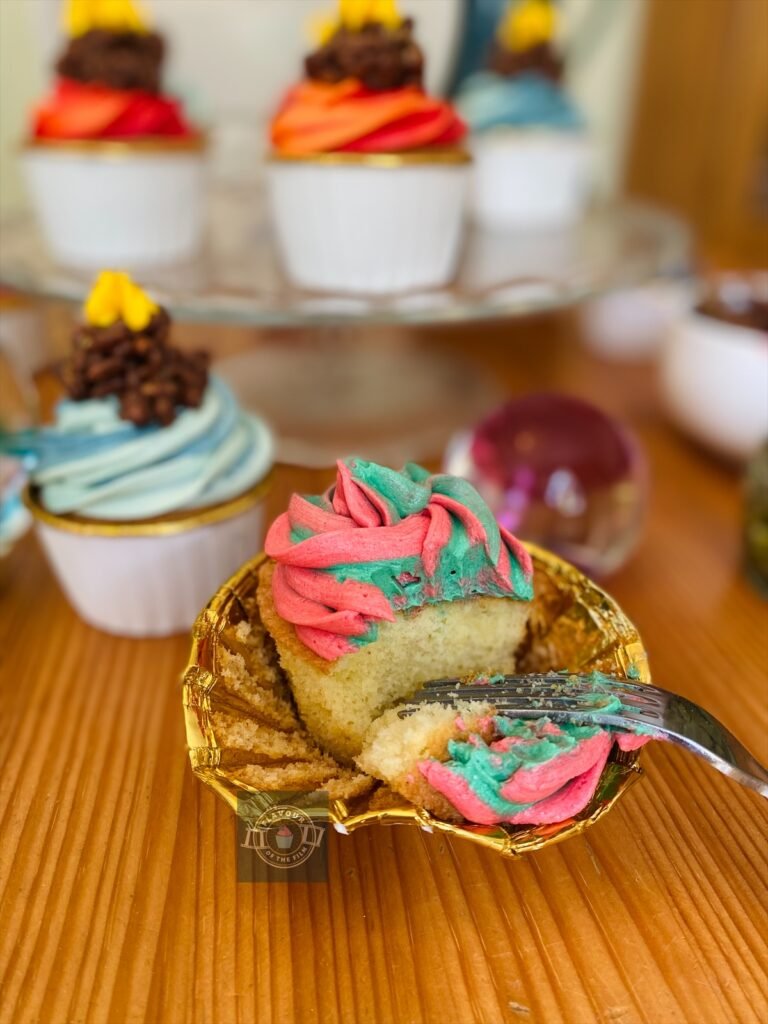
Easy conversion
The simplest way to make sure that you aren’t overdoing or underplaying something like baking powder is to make sure that you know the conversions. Easy fractions, friends.
I’ve created a couple of fun infographics for you to use as guidance when adapting tsp and tbsp measurements, as well as small cup measurements! They are available as PDF documents to download and print at the bottom of this post, too! Reference: MasterClass.
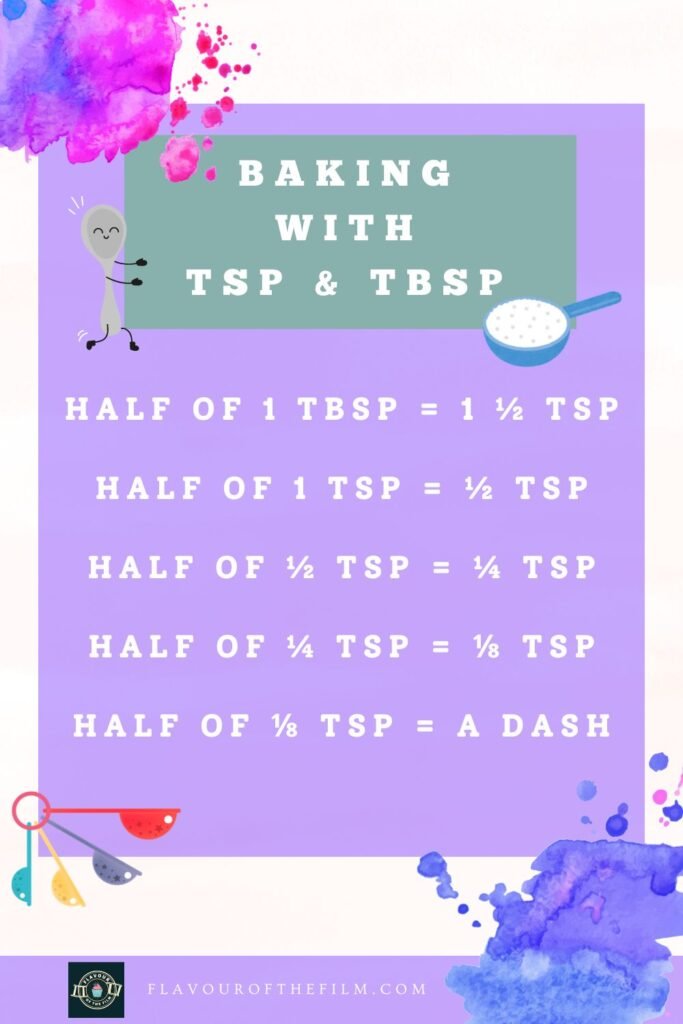
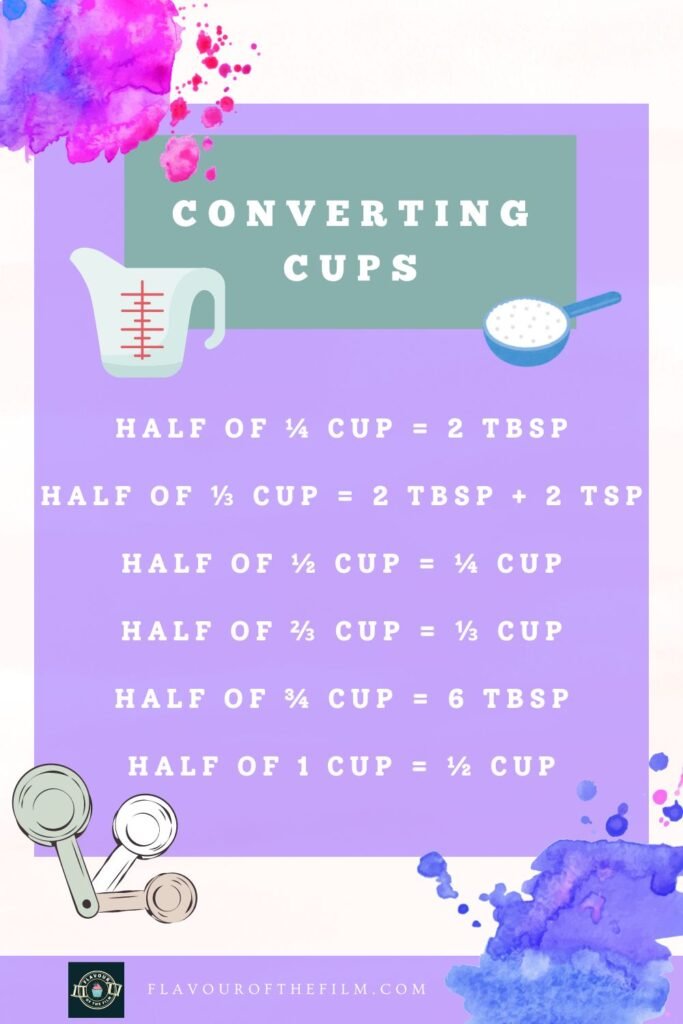
How to scale a recipe to increase the yield
If the word “formula” used earlier in this post made you twitch, you’re not alone. When I say that maths is a sore point for me, I mean it. The only time numbers make any sort of sense to me is when they are applied to the context of food.
Even then, I need to make sure whatever maths I’m applying to the food is easy and pretty foolproof. Having experienced seeing my cake overflow and practically explode in the oven, I want to make sure that I know my ingredients are working in harmony together.
Harmony is what we all want, right?
To increase a recipe, the formula is as follows:
You want to multiply the ingredient amount by 1, with the percentage you are looking to increase it by as a decimal after the 1. Here’s an example:
I want to increase my recipe by ¼ or 25%, so I multiply each ingredient amount by 1.25.
Let’s go back to the plain vanilla cake from earlier:
150g plain flour multiplied by 1.25 equals 187.5g plain flour.
The 1 is the original quantity stated in your recipe. You need to include it in your formula so that the equation understands that you are adding to the original amount, not decreasing it. This last part will make more sense in the next section!
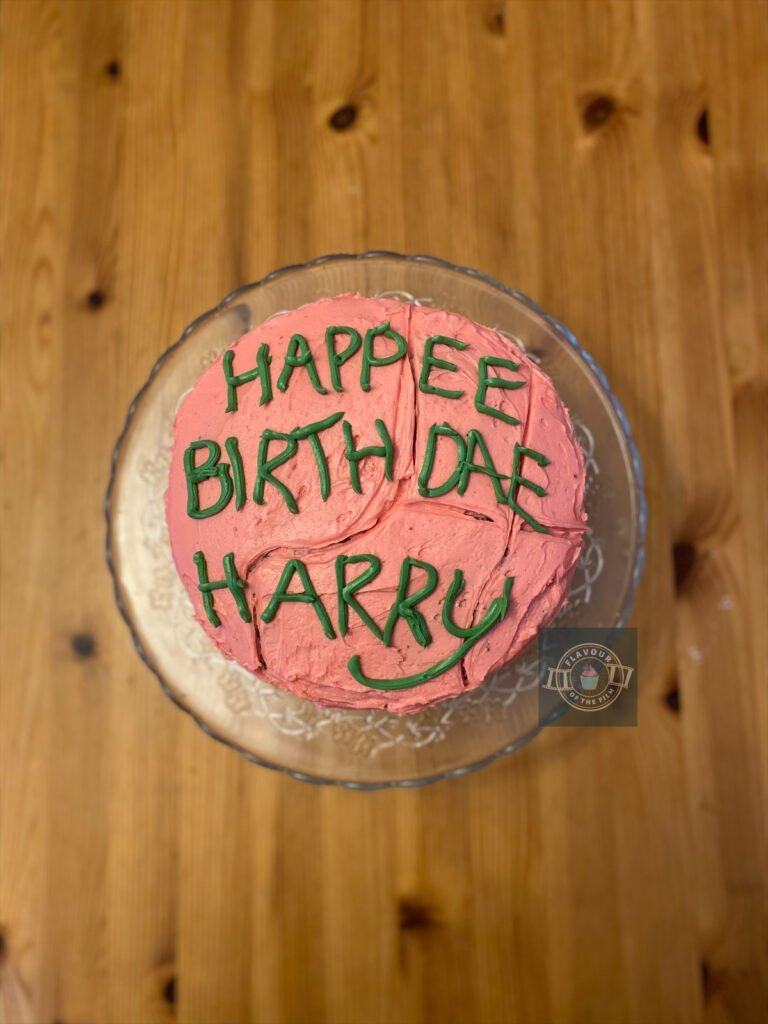

Lots of your new quantities may be odd numbers with decimals.
When this happens, I tend to round up to the next 5 or 10 just for ease. With 187.5g, I would round up to 190g. Round up when scaling recipes up, round down when decreasing them.
Some bakers may read that and cry out in despair, but it really is a lot easier to do that than to try and measure out your ingredients to figures like 188g. Sometimes I do weigh my measurements out to such specific numbers, but for the most part, rounding to the nearest 5 or 10 still gives you a really great bake.
You need to use this formula with every ingredient in your recipe. Yes, friends. Use a calculator! No one is asking you to do this in your head or on paper. But, if you have that ability… well, you’re awesome.
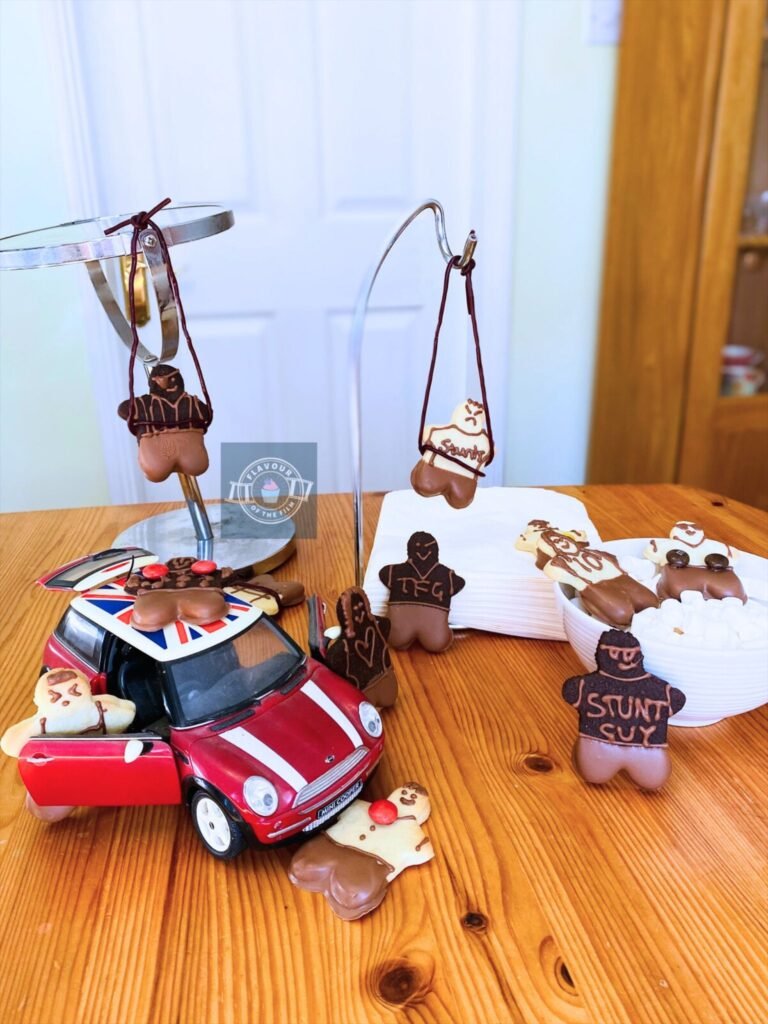
How to scale a recipe to decrease the yield
So, now you’ve seen the formula for how to increase each ingredient in a recipe. It makes sense, right?
Now you’re wondering how to decrease the yield when scaling recipes. This is where it gets a little confusing for those of us that just don’t get maths. Once you know it, you’ll understand it, though. No stress, friends.
To decrease a recipe, the formula is as follows:
You want to multiply the original ingredient by the remainder of the whole. Sounds confusing, I know. But here is my example:
I want to decrease my recipe by ¼ or 25%, so I multiply each ingredient by 0.75.
Yep, I’m bringing back the plain sponge cake again:
150g plain flour multiplied by 0.75 equals 112.5g.
0.75 is 75% which is the remainder of the whole when you are working with a 25% reduction.
Yes, friends. You need to multiply even when decreasing the recipe. Why? Because dividing is not only messy, it increases your end amount. Try dividing 150g by 0.75 and you’ll see.

What to do if your results are odd numbers and decimals when scaling down
Just as I said that I usually round up when I get super specific amounts when scaling up my recipe, I round down when decreasing it.
112.5g would be rounded down to 110g. Still pretty specific, but more accurate than 100g would be. When rounding up or down, don’t go too far. Just round to the nearest 5 or 10 to keep it sensible.
Is your head hurting yet? I hope not. Once you crack this, scaling recipes is pretty much plain sailing from here.
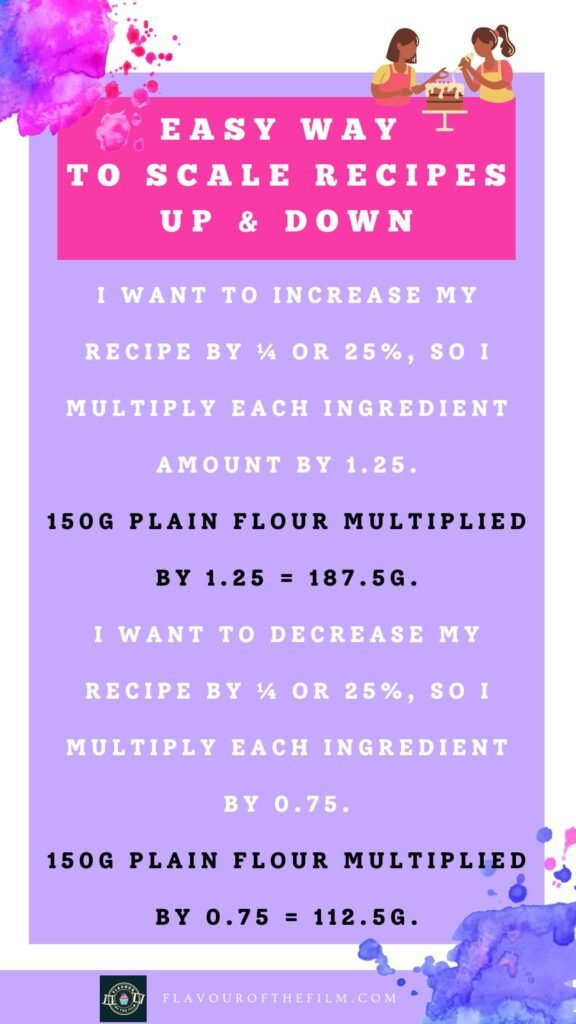
What if I need to be super specific?
If for any reason you need to be incredibly specific when you are scaling your recipes, this formula works wonders.
Say you need to increase your recipe by 36%.
150g plain flour multiplied by 1.36 equals 204. Easy.
As you are increasing the recipe by a super specific amount, stick with whatever your end result for each ingredient is. Only round up decimals to a whole number when increasing, and down when decreasing. In this case, I’d stick with 204.
This is one of the reasons why using the metric system is so much easier! As well as using a digital scale.
To decrease by 36%, I would multiply 150g by 0.64 as that is the remainder of the whole.
150g multiplied by 0.64 equals 96.
Just so we are clear: 36 + 64 = 100. So, 64 is the remainder of the whole in this example.
Again, I would stick with 96g in this case – or as close to it as possible if using a set of analogue scales.
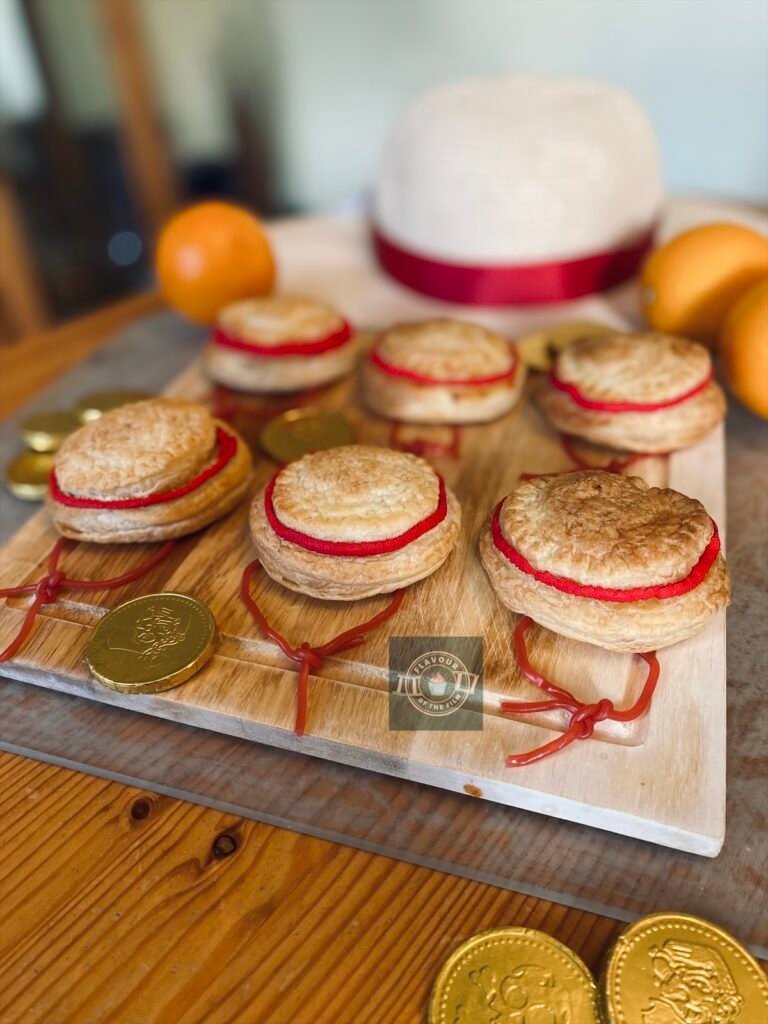
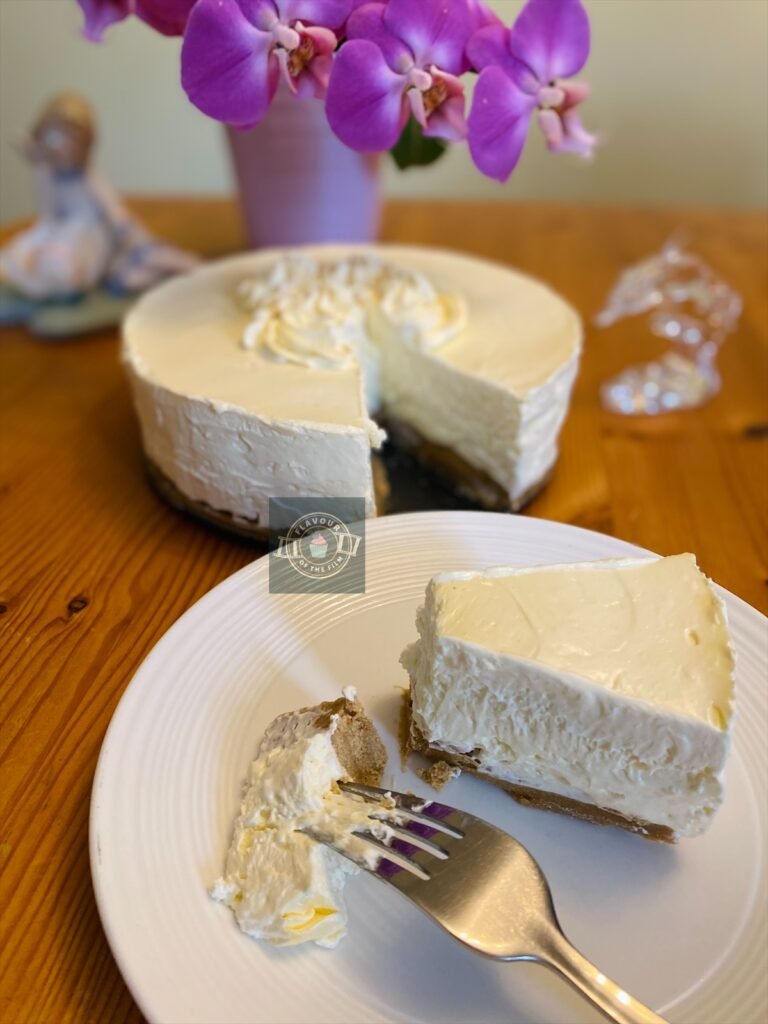
Oven temperature and baking times
The oven temperature stated in the original recipe shouldn’t change. Whether you are increasing or decreasing when scaling recipes, you should only be increasing or decreasing so that you are still using the same equipment i.e. cake tins during the baking process.
For example, if you are increasing a recipe to make a four layer cake using a recipe that makes a two layer cake, you want to aim to use the exact same cake tins, just two more of them.
This will mean that there is more baking in your oven at one time, no matter what recipe you are scaling UP.
This can affect the baking time so that your cake layers may need a little longer to bake before they are done, but this is usually by a minimal amount, if at all.
Use your usual techniques to check when your sponges are done and you should find that they bake within a similar time frame even though there are two more layers.
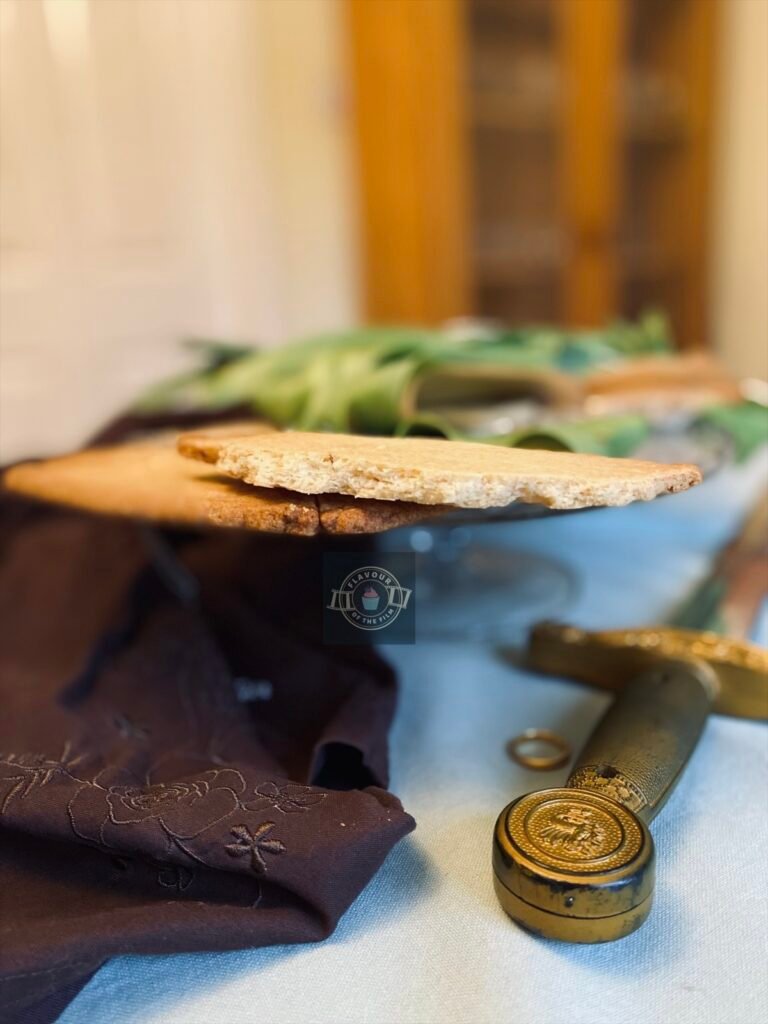
When scaling recipes DOWN, the baking time required may be less, but not by much.
The oven temperature should not differ either.
This all depends on the type of bake you are making, as well as how hot your oven runs.
Less biscuits may take less time, but less cake of the same size should still take a similar time. Certain breads bake at a similar rate no matter the size (unless you’ve adapted a recipe for a loaf to make buns, then the baking time would be a little less).
An example of the latter would be me using the same or similar quantities of ingredients in my Kronk’s New Groove raisin bread recipe as my Harry Potter and the Prisoner of Azkaban recipe, but reducing the baking time slightly because the smaller loaves were ready earlier than the one large loaf.


Adapting your equipment when scaling recipes
I’m not sure I really need to say this, but just so that I’ve covered all the bases… if you’re scaling recipes to increase yield, make sure that you are mixing ingredients together in a larger mixing bowl.
It’s common sense, but it’s easy to neglect taking into consideration whether or not you need to size up or down with your equipment when you’re focusing on scaling the recipe.
I made a wedding cake a few years ago and let me tell you, I was not prepared for it equipment wise. As a result, I had to make the cake batter in parts because I just didn’t have the equipment big enough to hold so much batter!
I had invested in the right size cake tins (another important element to consider), but completely overlooked where all of my cake batter would go while I was making it. The last thing you want is for your mixture to pour over the edges of your mixing bowl or spill out of your tins during baking.
Moral of the story? Be mindful that if you’re planning on scaling recipes to increase yield, make sure that you have bowls and tins big enough to hold it all.
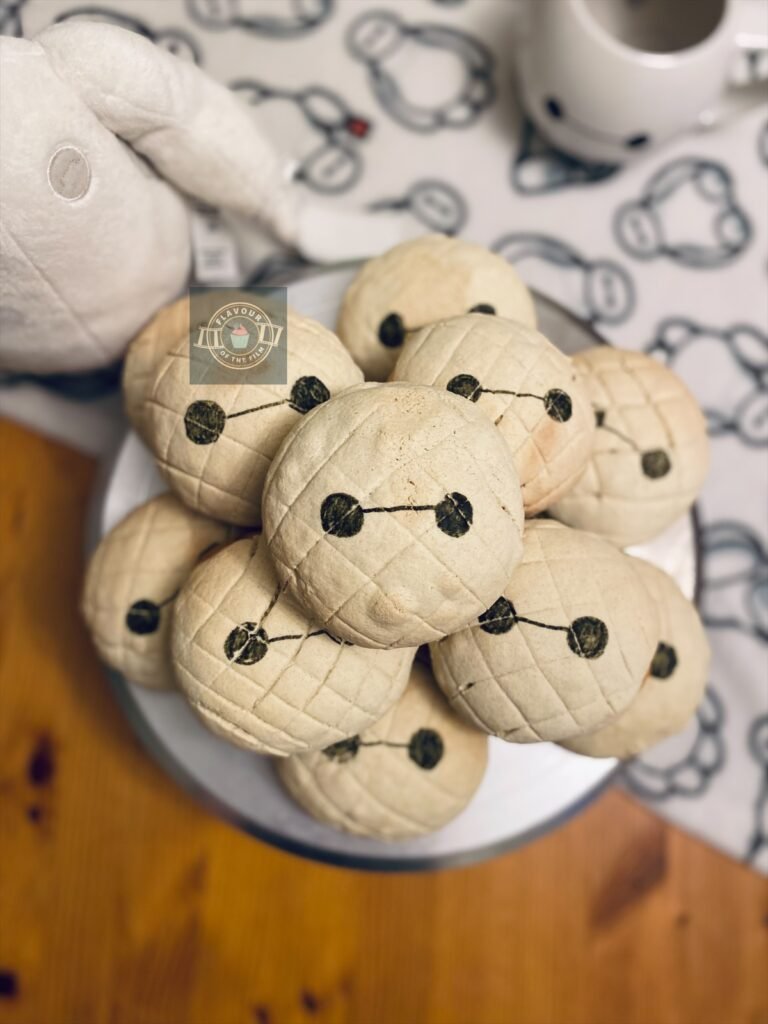
Scaling recipes the easy way
There you have it, friends. My easy way for scaling recipes that (hopefully) won’t make your brain cry out “PLEASE! NO MORE MATHS!”. Feel free to refer back to this post for guidance and clarification as and when needed. I’ve created a little example infographic for you to keep as well, which you can download below.
Happy baking, happy eating!
© Flavour of the Film. All content and imagery is copyright protected. Please do not use any of my images or written content without prior permission. If you would like to share any of the recipes or images on Flavour of the Film, please link back to the recipe in question and rewrite it in your own words, crediting Flavour of the Film as the original source.









Hey people!!!!!
Good mood and good luck to everyone!!!!!